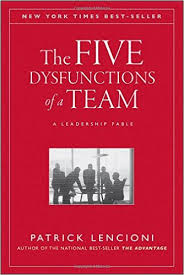Three Ways to Uncover Your Blind Spots: DiSC Assessment, 360 Survey, Truth Teller/Peer Coach
To Tell the Truth is a game show that has run consecutively and intermittently since 1956, airing at least one new episode in seven consecutive decades. The premise is that the panelist judges must identify the real central character who is with a group of imposters. The imposters may lie when answering questions while the central character must tell the truth.
We all need truth tellers in our lives and careers. These are the people who can help us uncover our blind spots. Behavioral blind spots are those areas in your behavior and projection of skills that others see with total clarity but in which we have no awareness. This is especially true when it comes to the impact of those behaviors and actions. The behavior itself may not be inherently negative but the impact on other people and team members may be negative or have adverse impacts.
Common leadership blind spots include verbal tone, facial expressions, volume of positive feedback and appreciation, approachability, and empathy. The impact of blind spots on leadership is large. Each unresolved or unmanaged blind spot has the potential to create relationship strains, conflict, distrust and lack of engagement.
There are three ways to uncover our blind spots. The DiSC assessment, 360 feedback surveys and truth tellers/peer coaches. DiSC is a behavior assessment tool that asks a series of questions that produce a detailed report about your personality and behavior. A 360 survey gathers feedback from your colleagues in the workplace. The participants may respond anonymously about your strengths and weaknesses. Truth tellers/peer coaching involves a trust-based relationship in the workplace where feedback can be exchanged with each other.
Our focus here is the care and feeding of your truth tellers. First, make a conscious decision to surround yourself with people who will tell you what you may not want to hear. Ask yourself: Do I provide a safe place for my truth tellers to give me feedback? Do I solicit and welcome feedback? When feedback is given do I argue against it, become defensive or ignore it? Our goal and the best way to accept feedback is to listen and express thanks.
I am fortunate to have many trusted truth tellers in my life. In my experience they appear in three distinct forms. They are the Comedian, the Drill Sergeant and the Angel. Each has given me valuable feedback about how I am perceived by others.
The Comedian uses humor to point out my behavioral blind spots. They may mimic or exaggerate my direct sharp tone or my lack of empathy. They pantomime my out of control ego. This is always done in a way that I know they have my best interest at heart and I can’t help but double over laughing at them and myself.
The Drill Sergeant is direct, to the point and unemotional. They are often the toughest to listen to because they are so blunt, but they have the courage to tell you what no one else will. They will tell me when my breath is bad, I smell, I’ve gained 20 pounds and when my pontificating sucks all the air out of a room. They don’t sandwich their comments with compliments or disclaimers. Despite the delivery I know they want me to be successful.
The Angel tends to tell me the truth indirectly by way of story, allegory or innuendo. They often model the behavior they hope I will adopt. They set a good example. Feedback is delivered with kindness and compassion. Their observation can be the easiest to accept although it is often very subtle, so I must stay diligent and listen closely to their counsel.
Listen to and thank your Comedian, Drill Sergeant and Angel. Author and teacher Michael Beckwith reminds us in Spiritual Liberation: Fulfilling Your Soul’s Potential “be grateful that life brings us all that we require to wake up…We discover within ourselves the humility to be a beginner over and over again, which keeps us teachable.” Our goal is to stay teachable and ready to listen when our Comedian, Drill Sargent and Angel show up to tell the truth. Oh, and if the Comedian, Drill Sergeant and Angel all call you an ass, put on a bridle.










